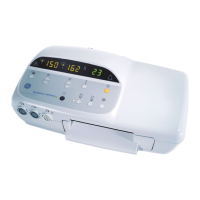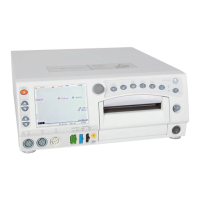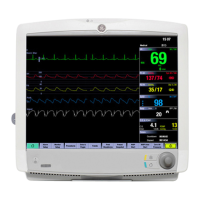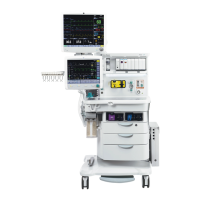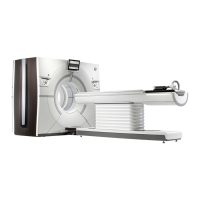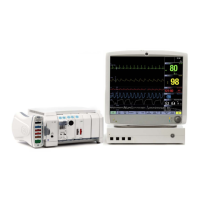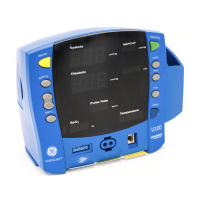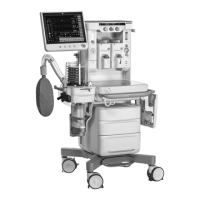4-22 120 Series Maternal/Fetal Monitor Revision B
2015590-001
Theory of Operation: Main Motherboard
Options Interface
The options interface consists of a buffered processor address/control and data bus,
three 80-pin connectors, and one 100-pin connector. All options connectors contain
16-bit address and data buses, along with four spare chip select lines. The
Communications Board connector (J5) contains ultrasound audio lines and
telemetry signals from the rear panel. The NBP 80-pin connector (J4) differs in that
it has pins for the +20 V supply (+20I) and the NBP power supply (+15BP) and does
not have the telemetry signals. The 100-pin connector (J7) for the DSP Board also
has the telemetry signals, +20 V for the isolated power supply, as well as an
additional +12 V supply for the EL display. The Communications Board holds the
J102 analog output circuitry and connector, keyboard circuitry and connector, and
telemetry input connector. The spare option slot is not used currently,
The DSP front panel interface section (goes through the options interface), consists
of a 1k x 8 shared memory upgradable to 2k x 8 and a DSP Board connector. The
shared memory arbitration logic (BUSY line) is not used. The interrupt logic in the
shared memory is tied to the 68302 processor and is also read through the rear panel
interface port (IRQ7/). The rest of the lines on the DSP connector route the
ultrasound audio, FECG80dB, MECG60dB, and the telemetry lines to the options
interface communications connector and rear panel jacks. RS-232C lines for the
MSpO
2 and FSpO2 modules are also present (connects to channel C and B of 68C94
QUART) on the DSP connector. The front panel interface section is just part of the
general processor interface (data, address, and control).
Rear Panel Interface
This section consists of a buffer (U8) which receives the remote mark and FAST
inputs, analog buffers (in U7) which output the FECG 80 dB and MECG 60 dB
signals, and legplate signal circuitry. (Only early models have legplate connectors.)
A 500 ms square wave is generated from the control latch (U22) and is wave shaped
and attenuated to about 15 mV.
Audio Section
This section consists of a four channel volume control and bridge type power
amplifier. Two of the volume controls (dual DAC U14), are preceded by an analog
multiplexor (U28) which allows US or US2 audio on one channel and US2 or ECG
timer audio on the other channel. The second set of volume controls are dedicated to
two timers from the QUART chip (U2). All of the timers are pre-filtered (U15,
U12) to eliminate the high frequency components from the audio. The outputs of
the four volume controls are then summed together (U13) and fed to the TDA1519
stereo amplifier (U1). The TDA1519 is stereo amplifier connected in a bridge
configuration in order to eliminate the large series coupling cap and non-standard
power supply requirements.
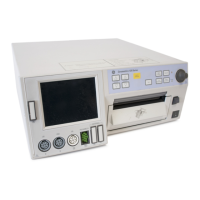
